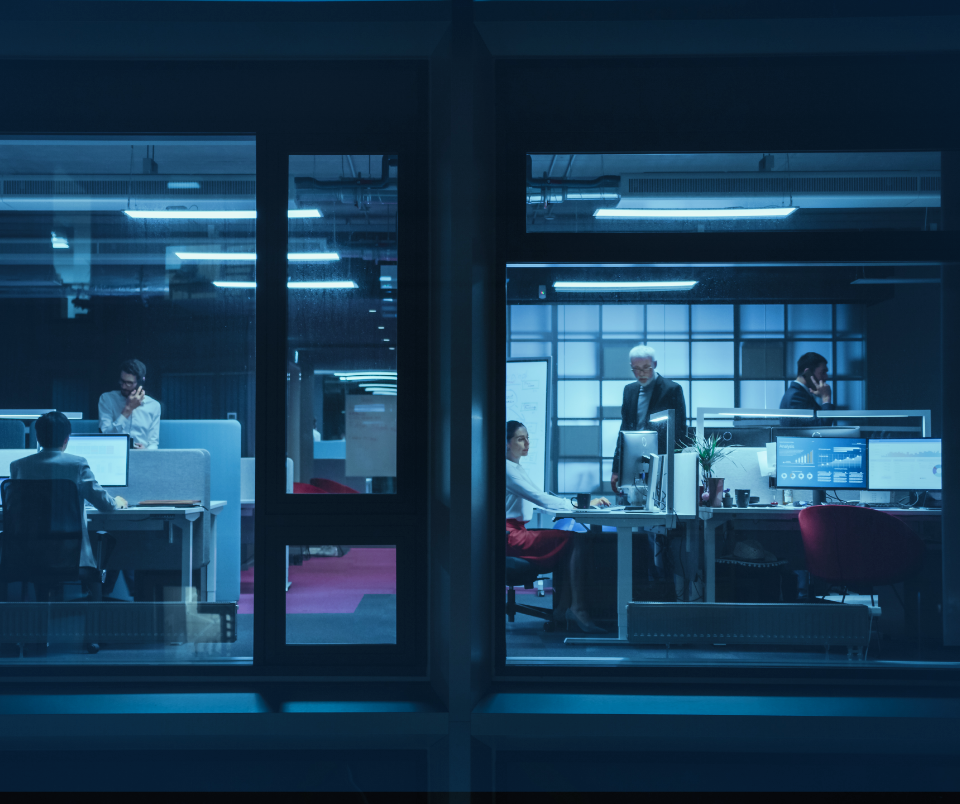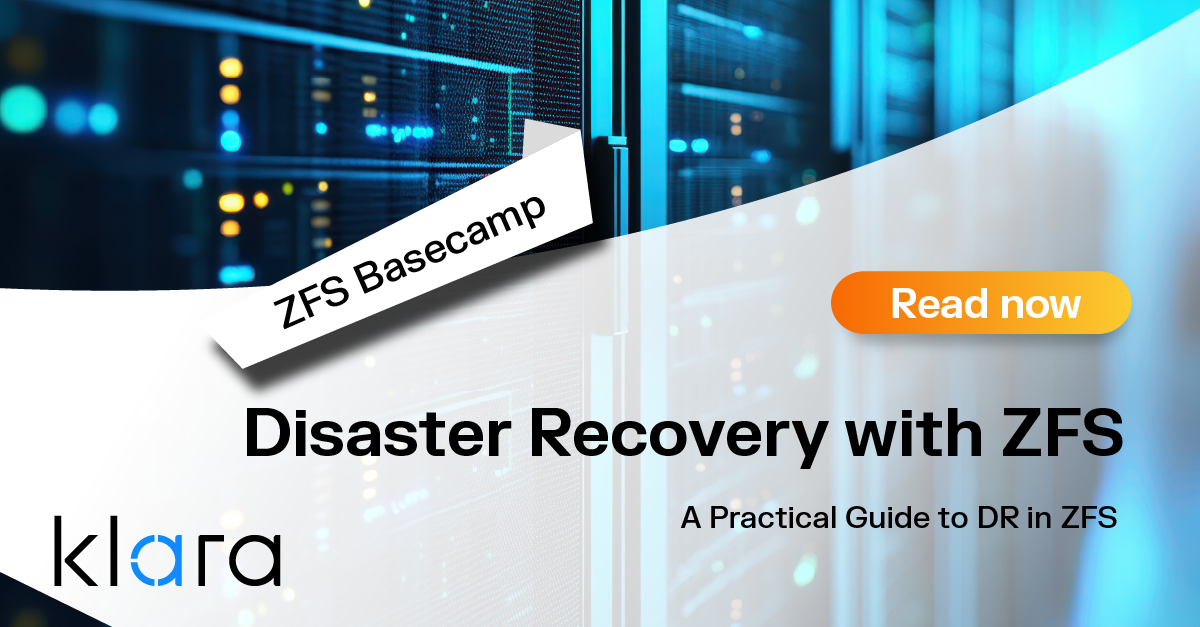Improve the way you make use of ZFS in your company.
Did you know you can rely on Klara engineers for anything from a ZFS performance audit to developing new ZFS features to ultimately deploying an entire storage system on ZFS?
ZFS Support ZFS DevelopmentAdditional Articles
Here are more interesting articles on ZFS that you may find useful:
- ZFS in Virtualization: Storage Backend for the Pros
- ZFS Performance Tuning – Optimizing for your Workload
- Reliable ZFS Storage on Commodity Hardware – A Cost-Efficient, Data-Sure Storage Solution
- Owning the Stack: Infrastructure Independence with FreeBSD and ZFS
- Why You Can’t Trust AI to Tune ZFS
Data loss is not a theoretical risk — it is a measurable, frequent occurrence. A 2022 Veeam Data Protection Trends Report found that 76% of organizations experienced at least one ransomware attack last year, and that less than half of their data could be reliably recovered. Hardware failures, operational mistakes, and malicious attacks continue to expose weaknesses in traditional backup and recovery strategies. And if that wasn’t enough, let’s look at another lovely statistic: according to the University of Texas, 94% of companies that experience catastrophic data loss do not survive—43% never reopen, and 51% close within two years.
These numbers highlight an uncomfortable or even painful truth: without a resilient disaster recovery (DR) strategy, even minor disruptions can escalate into existential threats.
Yet many organizations still operate without DR planning, either assuming that backups alone are enough or underestimating how quickly downtime and data loss can cascade into broader impacts. In today's environment—with ransomware, hardware failures, and configuration errors all presenting daily risks—having a continuous, reliable disaster recovery strategy is not optional. It's critical.
Why a Continuous DR Strategy Is Necessary
Traditional backup models often operate on fixed schedules (e.g., nightly backups) and only protect against specific failure types. They rarely provide rapid recovery or seamless business continuity. Disaster recovery is not only about having "a backup somewhere.” Having a full, current, validated replica of your production environment ready to be activated when needed is required. When was the last time your team tested a full recovery from nothing?
Modern DR needs to be:
- Continuous: Frequent recovery points minimize data loss (low RPO).
- Reliable: Data integrity is verified and assured.
- Rapid: Minimal downtime between outage and restoration (low RTO).
- Secure: Protection against tampering, corruption, and unauthorized access.
Why ZFS Is Ideal for DR Environments
Let’s say we sold you on the idea that backups aren’t enough and DR is the next thing you need. What are your thoughts about using an open source software like OpenZFS (the Zettabyte File System)? ZFS was engineered from the ground up to prioritize data integrity, reliability, and operational flexibility—all essential attributes for a comprehensive disaster recovery systems.
Key ZFS Features That Enable Disaster Recovery
- End-to-End Checksumming: Every block of data written to a ZFS dataset is protected by a checksum, which is verified during every read operation. If corruption is detected, and redundancy (such as mirroring or RAID-Z) is available, ZFS automatically rebuilds a correct copy without administrator intervention.
In a DR scenario, this ensures that replicated or restored data is verifiably accurate — avoiding silent corruption that could compromise recovery efforts.
- Atomic Snapshots: ZFS snapshots create an instantaneous, consistent point-in-time copy of an entire dataset, without interrupting ongoing operations. Snapshots are space-efficient and extremely fast because they only record changes rather than duplicating data.
For DR, atomic snapshots guarantee recoverable, application-consistent recovery points. In the event of failure or attack, organizations can roll back to a safe, verified state within minutes.
- Efficient Replication: Using zfs send and zfs receive, ZFS supports block-level replication — both full and incremental. Only the blocks that have changed since the last snapshot are transmitted, minimizing bandwidth usage and replication time.
This allows for near-real-time DR synchronization between production and backup sites, ensuring Recovery Point Objectives (RPOs) can be measured in minutes rather than hours or days.
- Self-Healing: When a checksum mismatch is detected during a read operation, or integrity scan, ZFS automatically reconstructs the data from redundant copies and parity and corrects the bad data. Checksums allow ZFS to determine which disk contributed the corrupt data and detect persistent issues.
This proactive error correction prevents corrupted blocks from ever propagating into DR replicas or backups, maintaining high-integrity recovery targets without manual intervention.
- Built-In Encryption: ZFS provides native encryption at the dataset level, with options for securing both data at rest and data in transit during replication. Encryption and replication are designed to work together without requiring data to be decrypted and re-encrypted during the process.
In DR environments, encryption ensures that replicated data remains secure, even across public or semi-trusted transport layers, simplifying compliance with data protection regulations. ZFS encryption allows administrative operations such as replacing disks to proceed without requiring the encryption keys, meaning the DR site never needs access to the decryption key until it is activated.
- Native Compression: ZFS compression is transparent and efficient, allowing datasets to use algorithms like LZ4 and ZSTD to reduce storage footprint without noticeable performance penalties.
When replicating to DR systems, compression reduces the amount of data sent over the network and shrinks storage requirements on DR targets, improving efficiency without sacrificing recovery performance.
Leveraging ZFS for Disaster Recovery: Practical Use Cases
- Site-to-Site Replication: Use `zfs send | ssh zfs receive` pipelines to replicate datasets between geographically separated facilities. Schedule frequent incremental sends to maintain near-real-time copies of production data.
- Snapshot-Based Recovery Points: Schedule automated ZFS snapshots (e.g., every hour, or every 10 minutes) to create easily browsable, restorable recovery points. Snapshots are immutable by design, making them resistant to ransomware attacks that target live data.
- Disaster Simulation Testing: Use snapshots and clones to spin up full environments for disaster recovery testing without impacting production.
- Encrypted DR Replication: Replicate encrypted datasets securely to offsite locations without decrypting them in transit, maintaining data privacy even in the public cloud.
- Application-Specific Recovery: Use filesystem-level snapshots to recover databases, VMs, or application servers without needing complex restore procedures.
Why Work with Klara
Setting up a reliable ZFS-based disaster recovery plan requires more than just basic commands—it demands careful architectural planning, replication tuning, encryption management, and validation procedures. Klara Inc. specializes in helping organizations design, deploy, and optimize FreeBSD and ZFS-based infrastructure. Whether you need guidance on building your first DR site or tuning a multi-site replication strategy, our team brings deep, real-world expertise to the table.
Protect your critical data the right way—with ZFS and with a partner who understands how to make it work in production.






